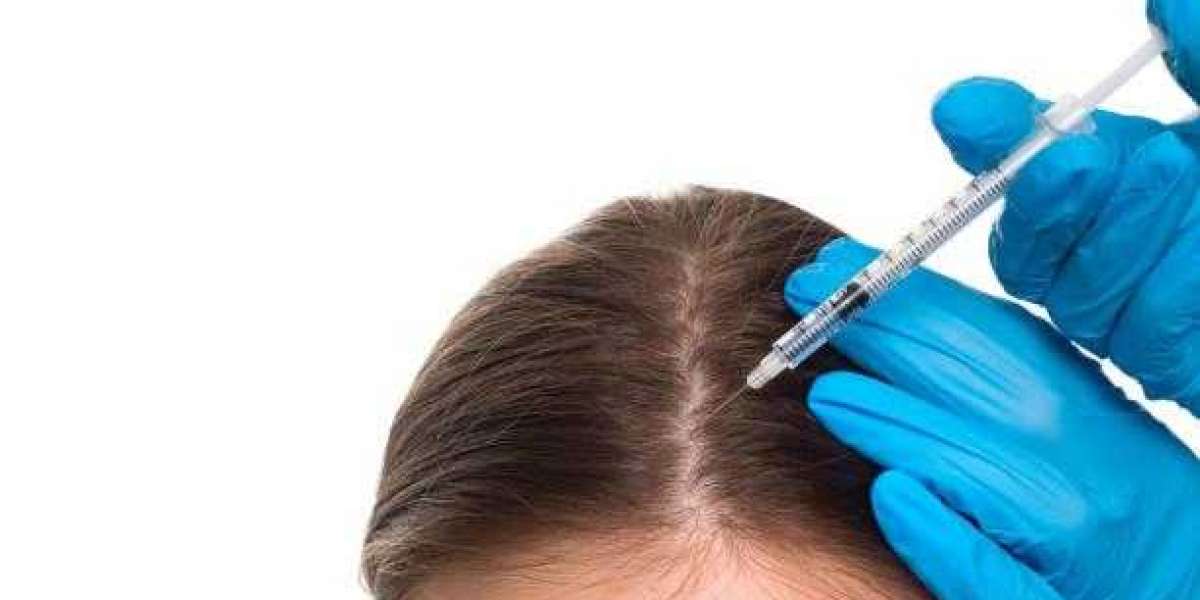With uses in sports medicine, regenerative healthcare, and aesthetics, platelet-rich plasma (PRP) therapy has become a multipurpose medicinal intervention. PRP therapy has drawn a lot of interest since it uses the body's natural healing processes to improve skin renewal, lower inflammation, and encourage tissue regeneration. This article provides a comprehensive overview of PRP therapy, its benefits, applications, procedures, and potential considerations.
What is PRP Therapy?
In order to promote healing and regeneration in particular body parts, PRP therapy uses a concentration of the patient's own platelets. Because platelets, which are blood cells, release growth factors and cytokines that encourage tissue regeneration and repair, they are crucial for wound healing.
A little sample of the patient's blood is extracted for PRP therapy, processed to separate the platelet-rich plasma, and then injected into the desired location. The treatment is a natural and least intrusive approach since it makes use of the body's natural ability to heal itself.
Applications of PRP Therapy
PRP therapy is widely used across various fields, including:
- Aesthetics and Skin Rejuvenation
PRP therapy is a great choice for people looking for ways to get youthful, glowing skin. Often called the "vampire facial," PRP is applied to the face through microneedling or injections. It stimulates collagen production, improves skin elasticity, and reduces fine lines, wrinkles, and acne scars.
- Hair Restoration
PRP therapy works well to treat hair loss, especially when androgenetic alopecia (pattern baldness) is present. By injecting PRP into the scalp, hair follicles are revitalized, promoting hair growth and improving hair density and thickness.
- Orthopedics and Sports Medicine
It is usually used to treat musculoskeletal injuries such as tendonitis, ligament sprains, and joint pain. It has shown significant success in managing conditions like rotator cuff injuries, tennis elbow, and knee osteoarthritis.
- Wound Healing
Chronic wounds can benefit from PRP therapy. The growth factors in PRP promote tissue regeneration and accelerate healing in these difficult-to-treat wounds.
- Dental and Oral Surgery
PRP therapy is increasingly used in dental surgeries to enhance healing following tooth extractions, implants, and gum surgeries.
The PRP Therapy Procedure
The PRP therapy process involves three main steps:
- Blood Collection
A small portion of the patient's blood is taken at the start of the process, usually from the arm.
- Processing the PRP
A centrifuge, a device that spins quickly to separate its components, is used to hold the blood sample. The platelet-rich plasma is separated from the other components.
- Injection or Application
The concentrated PRP is injected or applied to the target area. For treatments like microneedling, PRP is spread over the skin and allowed to penetrate through microchannels created during the procedure.
Patients can usually resume their normal activities quickly after the procedure, which usually takes an hour.
Benefits of PRP Therapy
PRP therapy offers several advantages:
- Natural Healing: PRP lowers the chance of problems or allergic responses because it uses the patient's own blood.
- Minimally Invasive: Surgery is not required because the treatment entails a blood draw and targeted injections.
- Versatility: PRP therapy can be customized for various medical and aesthetic applications.
- Accelerated Recovery: Growth factors in PRP speed up healing and tissue regeneration.
Potential Side Effects and Risks
Even while PRP therapy is usually regarded as safe, there are some possible dangers and side effects to take into account:
- Temporary Swelling and Bruising: Mild swelling, bruising, or discomfort at the injection site is common but usually resolves within a few days.
- Infection: Although rare, any injection-based procedure carries a slight risk of infection.
- Variable Results: The patient's health, the ailment being treated, and the practitioner's level of experience can all affect how effective PRP therapy is.
PRP Therapy in Hair Loss Treatment
One of the most promising uses of PRP therapy is the treatment of hair loss. It boosts blood flow to the scalp, awakens dormant hair follicles, and encourages the development of new hair. Research indicates that PRP treatment can help patients with androgenetic alopecia achieve much greater hair thickness and density. The treatment is typically administered in multiple sessions spaced weeks apart for optimal results.
PRP in Aesthetic Medicine
PRP therapy is celebrated in aesthetics for its ability to restore youthful skin. It enhances collagen production, improving skin tone and texture. Also, the treatments can be combined with other procedures like dermal fillers or laser therapy to achieve comprehensive facial rejuvenation.
PRP Therapy for Joint Pain
PRP therapy is utilized in orthopedics to treat inflammation and joint pain, especially in patients with osteoarthritis. PRP is injected directly into the afflicted joint, which improves mobility, lessens pain, and delays the deterioration of cartilage.
Who is a Good Candidate?
Although PRP therapy is appropriate for many people, it might not be the best option for everyone. Good candidates typically include:
- Individuals with early-stage hair loss
- Patients seeking non-surgical options for joint pain or skin rejuvenation
- Those in overall good health, as underlying conditions, can impact the effectiveness of PRP therapy.
Alternative treatments may be necessary for patients with certain medical conditions, such as blood abnormalities or current infections.
What to Expect After PRP Therapy
Patients may have slight redness or swelling following PRP therapy however these adverse effects usually go away fast. Most people can return to their regular activities in a day or two, though recovery times vary based on the treated location. Results often become noticeable within weeks, with continued improvement over several months as the body regenerates tissue.
Cost of PRP Therapy
The cost of PRP therapy depends on factors such as the treatment area, the number of sessions required, and the clinic's location. On average, a single PRP session can range from $500 to $2,500. While it may not be covered by insurance for aesthetic applications, some plans may cover PRP for medical conditions like joint pain.
Conclusion
PRP therapy is a groundbreaking treatment that taps into the body's natural healing abilities. Whether for hair restoration, skin rejuvenation, or pain management, it offers a versatile, minimally invasive solution with promising results. To find out if PRP therapy is the best choice for you, it is crucial to speak with a licensed healthcare provider.
As research and technology advance, PRP therapy continues to evolve, offering even more applications and benefits for those seeking effective and natural medical treatments.





